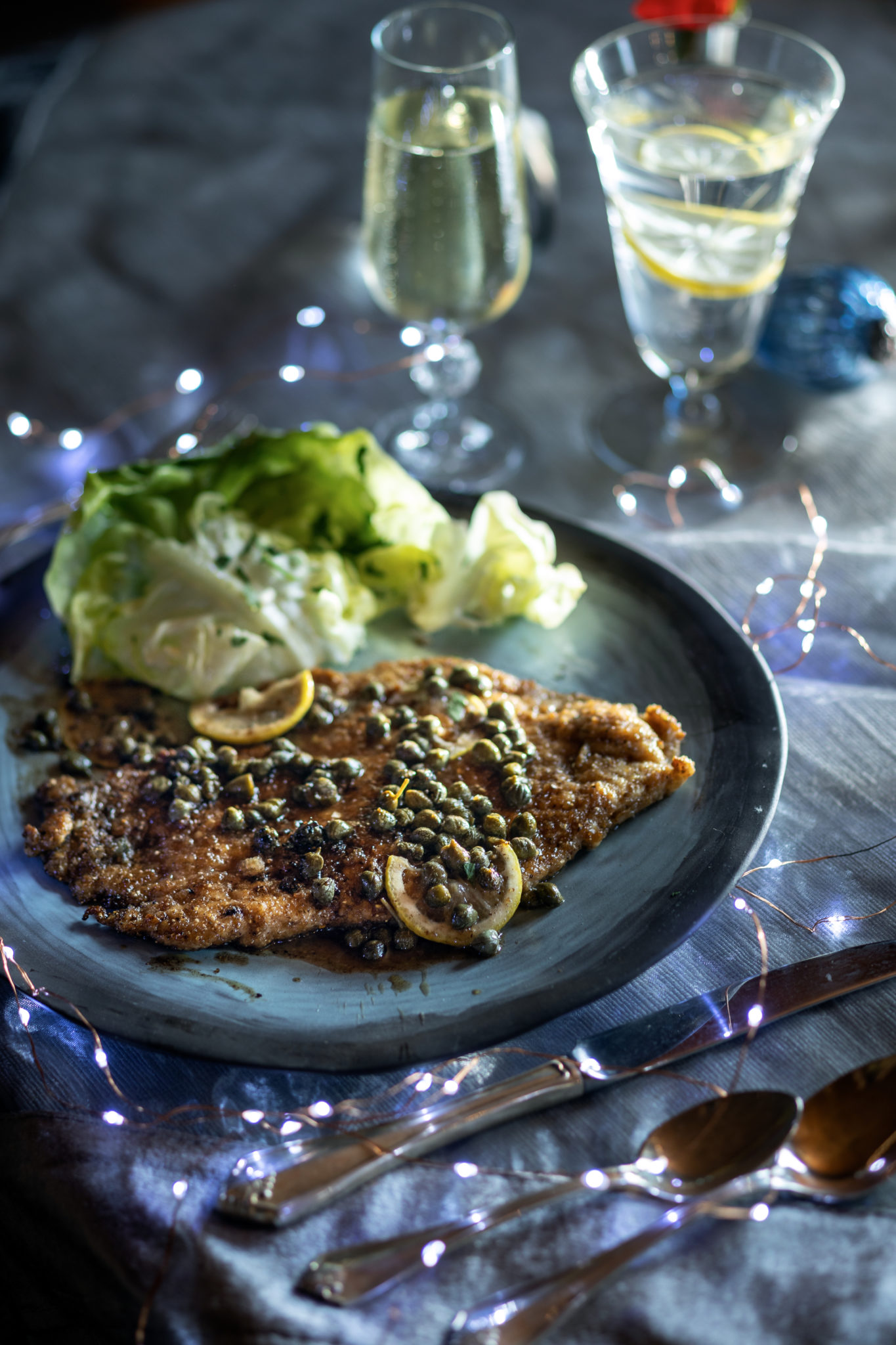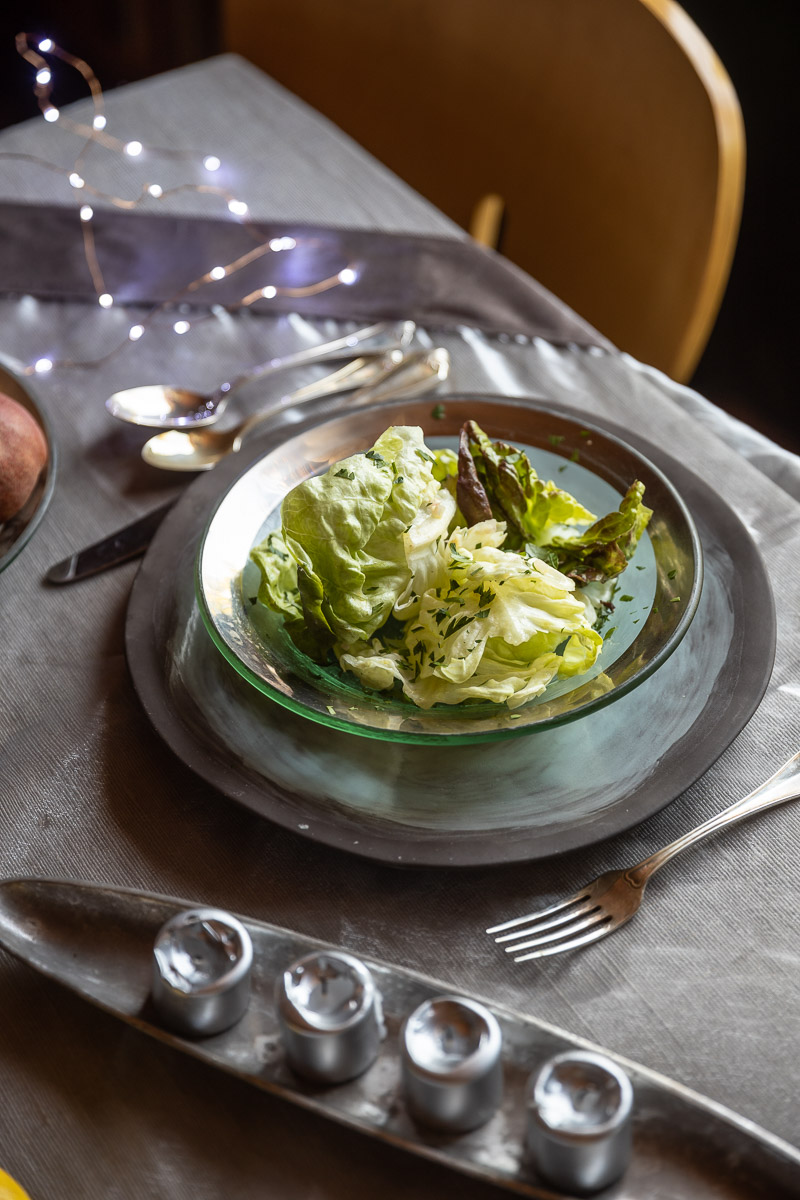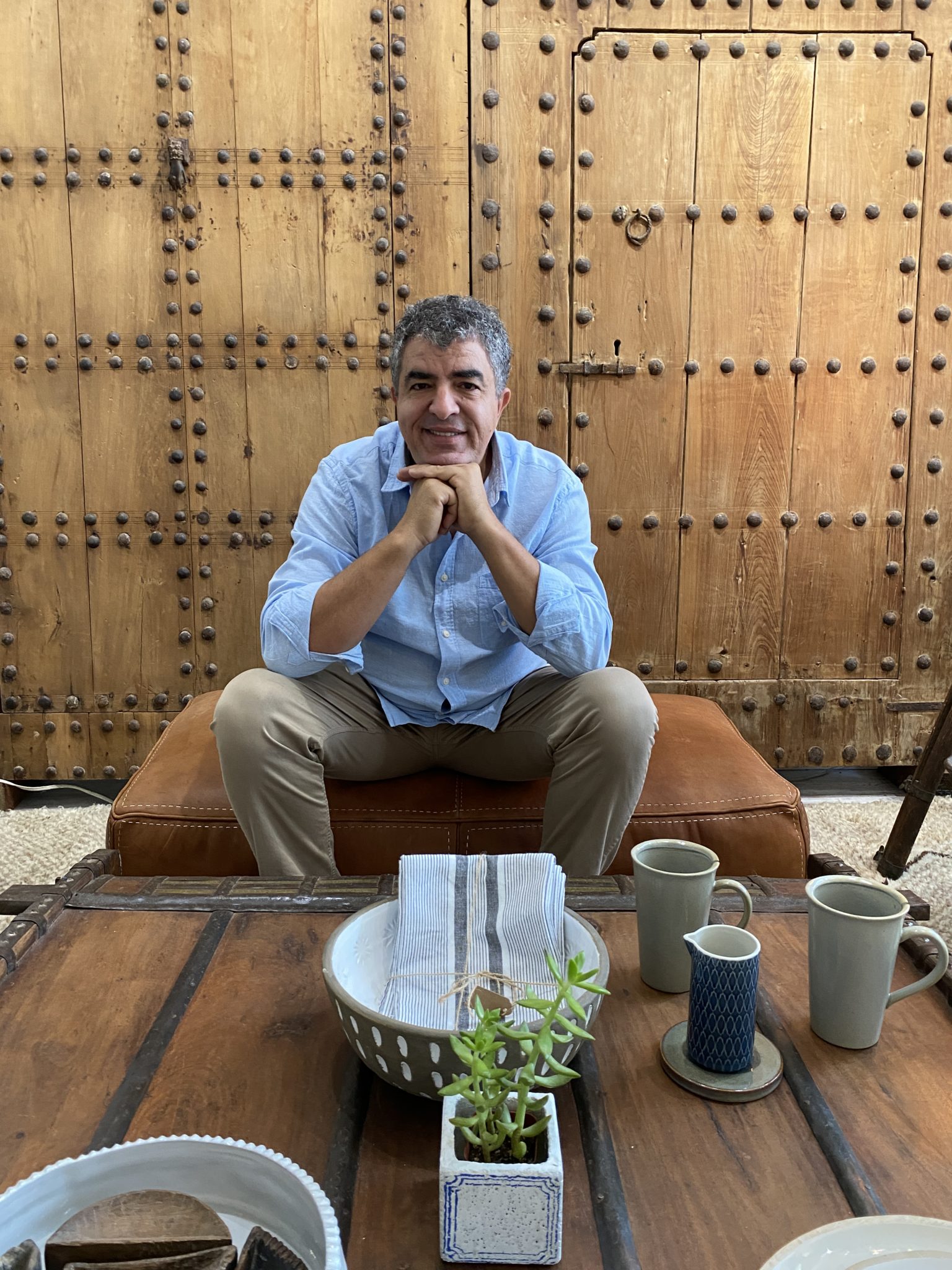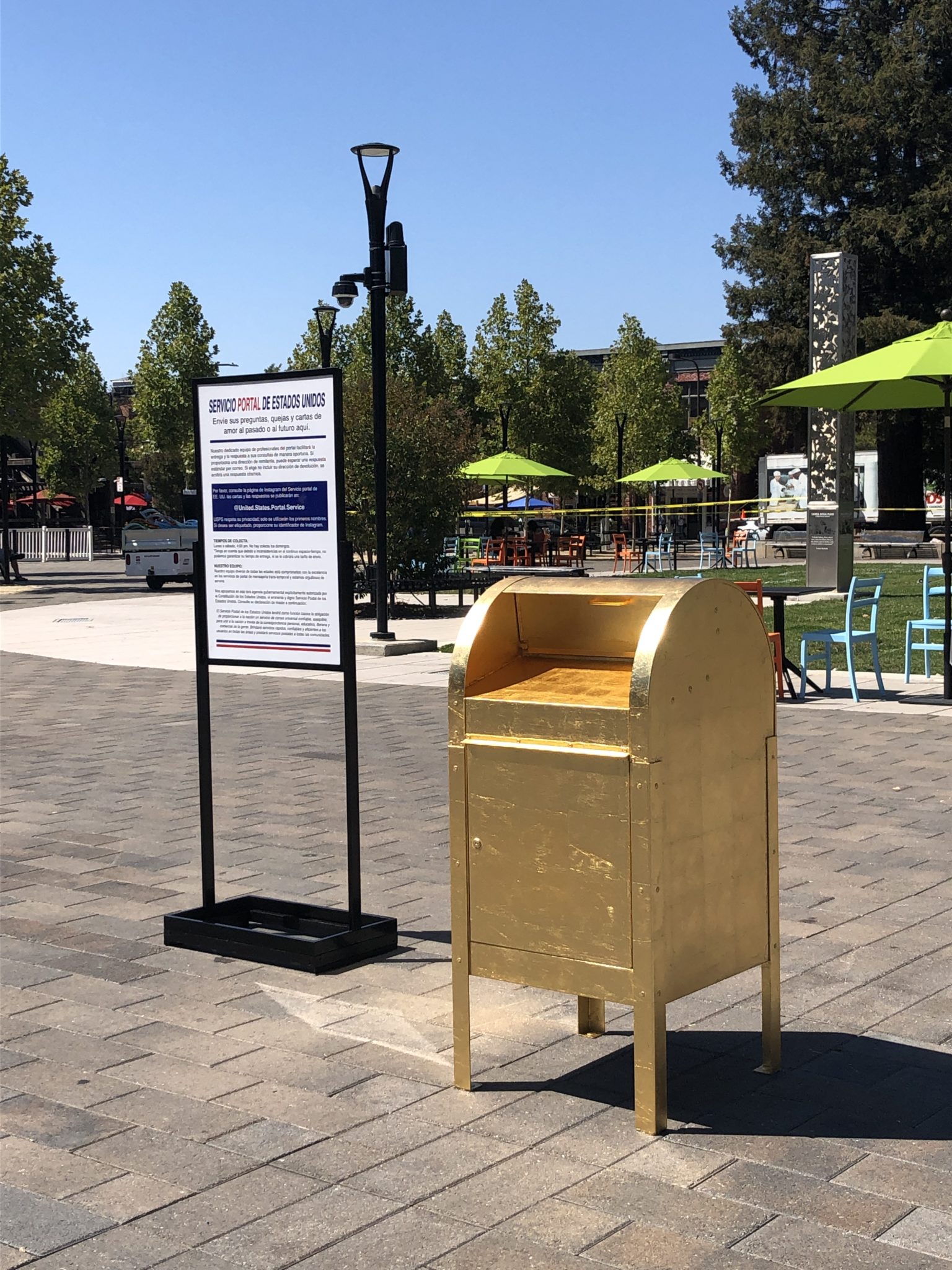The flavors of favorite dishes linger in our hearts and tease our palates. The memory of a meal from a now-closed favorite spot, such as the spaghettini al Sugo from Santi’s or La Poste’s dreamy chocolate mousse, can roll back the years like nothing else. Some of us are still searching for a burger that rivals Rocco’s in Freestone, while others try to duplicate, say, Opera House Cafe’s transcendent zucchini, potato and sausage stew, in our own kitchens.
Some of our best classic dishes have been swallowed by history; for example, no one seems to still have the recipe for Jerome’s Good Dogs carrot cake anymore. But others are easy to track down, as we did for this holiday feast, which features four memorable dishes, and all the tricks and tips to prepare them, straight from the original chefs.
The menu is perfect — and perfectly easy — for Hanukkah, Winter Solstice, Christmas Eve, New Year’s Eve, or any other special night at home, with candles and lights aglow and the tastes of our own history warming you. Call it a new Sonoma tradition in the making.
Mosaic’s Mushroom & Brie Crostini
Serves 4 to 6
From 2005 to 2011, Tai Olesky presided over Mosaic, a popular bistro in Forestville; the space is now home to an Italian roadhouse. This appetizer was one of the restaurant’s most beloved dishes, something its customers recall fondly and frequently.
• ½ baguette, sliced and toasted
• 6 to 8 ounces mixed mushrooms (we used trumpet royale, Velvet Pioppini, Alba Clamshell, and maitake)
• 3 tablespoons rice bran oil, clarified butter, or mildly flavored olive oil
• 1 shallot, minced
• Kosher salt
• Black pepper in a mill
• ½ cup Madeira
• 3 tablespoons cream
• 1 tablespoon minced fresh Italian parsley
• 1 teaspoon minced fresh dill
• 1 teaspoon minced fresh tarragon
• 8- to 10-ounce wedge of Brie cheese Preheat an oven (a toaster oven is ideal) to 300 degrees.
Slice the trumpet royale mushrooms as thinly as possible. Break the other mushrooms apart.
Put the oil into a heavy skillet set over very high heat. When the pan is very hot, add the mushrooms and cook until they are browned and nearly caramelized but not burned. Add the shallot and cook 30 seconds more. Season with salt and pepper to taste.
Put the Brie on a small oven-proof pan, set in the oven, and warm through,
until it is almost but not quite melted, about 7-10 minutes.
Add the Madeira to the mushrooms and cook until reduced by half. Add the cream, lower the heat, cook for 30 seconds, remove from the heat, add the herbs and toss.
Transfer the Brie to a platter, spoon the mushrooms on top, surround with croutons, and enjoy.

Bistro Ralph’s Chicken Paillard
Serves 1, easy to multiply
Chef Ralph Tingle’s Bistro Ralph was a centerpiece of downtown Healdsburg dining for 24 years until it closed in 2016.
His Chicken Paillard remains so present in customers’ memories that he is exploring locations for a tiny eatery that will feature just this dish. Each serving of chicken, once it is pounded thin, needs its own pan, but because it cooks so quickly, it is easy to serve to any number of guests.
To serve more than three or four, keep finished dishes warm in a 200-degree oven while you make the others.
• ½ cup unseasoned breadcrumbs
• 2 tablespoons polenta
• 1 boneless, skinless chicken breast, preferably organic
• Kosher salt
• Black pepper in a mill
• 2 heaping tablespoons butter
• 2 tablespoons capers, drained
• 2 tablespoons lemon juice
• 3 or 4 very thin lemon wedges, optional Put the breadcrumbs and polenta in a bowl and mix together. Set aside.
Put the chicken breast into a large plastic bag. Use a wooden meat tenderizer, a rubber mallet, or a rolling pin to pound the chicken breast until it is quite thin, about 1/8-inch. Remove the chicken from the bag and set it on a clean work surface.
Sprinkle the breadcrumb mixture all over the chicken, pressing slightly to adhere.
Set a heavy skillet over high heat, add the butter, and, when it begins to take on a bit of color, add the chicken. Cook for about 30 seconds, until the chicken begins to pick up a bit of color; flip it over and cook for 30 seconds more.
Add the capers, lemon juice, and lemon wedges, if using. Cook for a few more seconds, transfer to a warmed plate, and enjoy.

Chez Peyo’s Butter Lettuce Salad with Dijon Vinaigrette
Serves 4 to 6
Chef Pierre Lagourgue ran Chez Peyo in Sebastopol from 1977 to 2005. Today, he still teaches local cooking classes. Although there are many favorite dishes from the restaurant, the one that many diners recall most lovingly is this simply perfect butter lettuce salad.
• Dijon Vinaigrette (recipe follows)
• 1 large or two medium heads of butter lettuce (about 10 ounces), leaves separated, rinsed, and thoroughly dried
• 2 tablespoons chopped fresh Italian parsley First, make the vinaigrette.
Then, put the cleaned and dried lettuce leaves into the bowl with the vinaigrette and gently turn the leaves in the dressing so each leaf is lightly coated. Divide among individual plates, scatter parsley on top, and enjoy right away.
Dijon Vinaigrette
• 1 small shallot, minced
• 4 teaspoons best-quality red wine vinegar
• 2 teaspoons Dijon mustard
• ½ teaspoon kosher salt
• Black pepper in a mill
• 3 tablespoons extra virgin olive oil, plus more to taste Put the shallot, vinegar, mustard, salt, and pepper in a large bowl, mix well, and whisk in the olive oil.
Taste, correct for salt, and add a bit more olive oil if it is too tart.
And for dessert…
Chef Stephanie Rastetter launched a sweet little place, Water Street Bistro, in downtown Petaluma in the fall of 1999. For the five years prior, she was chef Daniel Patterson’s right hand at the iconic Babette’s in Sonoma. Her caramel sauce is simple to make and effortlessly delicious, a luscious way to end a holiday meal. Enjoy the sauce drizzled over apples, ice cream, or gingerbread.
Put one cup of granulated sugar and ⅓ cup water into a deep, heavy pot set over high heat. Do not stir. Let it cook until it is transparent and begins to take on an amber glow. Lower the heat and carefully add 6 tablespoons of sweet butter a piece at a time, a half-cup of cream, and a teaspoon of vanilla extract, being very careful to protect yourself, as the sugar will bubble up as soon as you add other ingredients. Stir with a wooden spoon for a few seconds, until smooth and creamy, then remove from heat.
Drizzle the sauce over your chosen pairing and top with a sprinkling of fleur de sel or Maldon salt flakes













